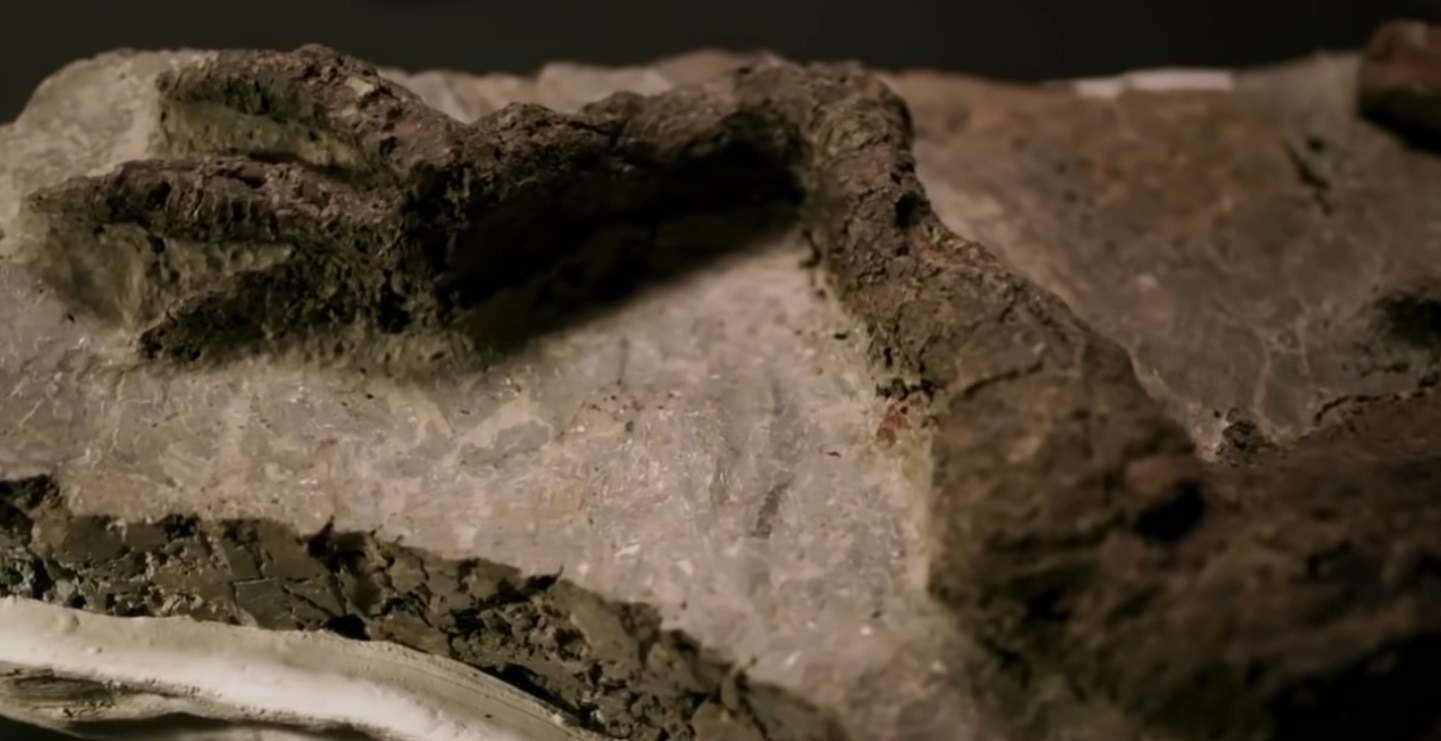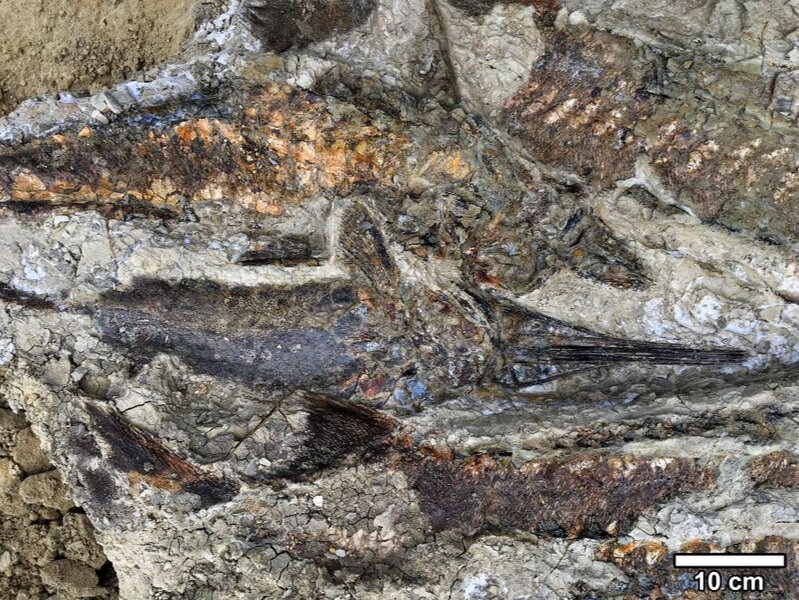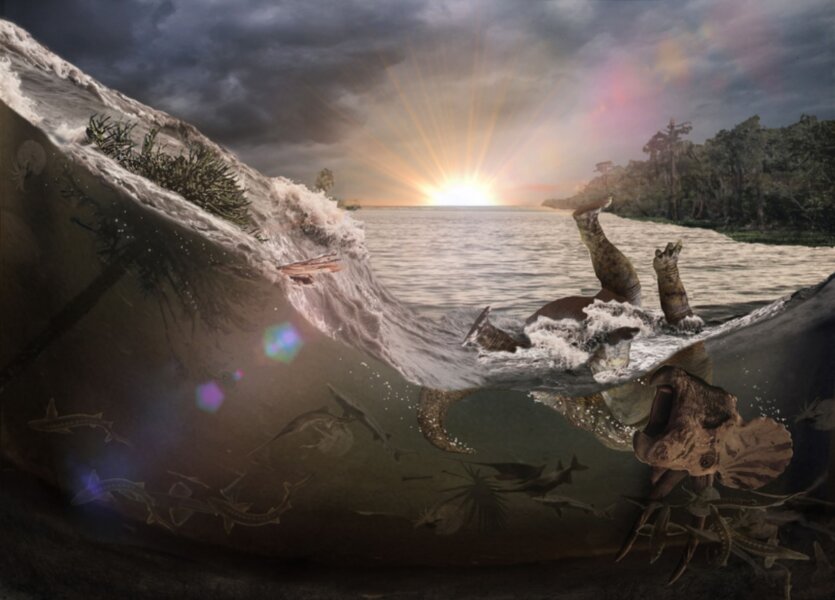Create a free profile to get unlimited access to exclusive videos, sweepstakes, and more!
Is this fossilized dinosaur leg a record of the day the asteroid struck?
It was the worst, and last, day of their lives.

John Hammond’s InGen sought to recreate the world of dinosaurs using genetic material preserved in the guts of mosquitos trapped in amber. The science behind whether or not something like that would even work is tenuous at best, but it makes for a good story. The Jurassic Park franchise, which is about to unleash its sixth installment, cashes in on the public’s enchantment with the lost age of dinosaurs.
That same fervor, to uncover the truth of what dinosaurs and their environment were really like, fuels the studies of paleontologists all over the world. The asteroid impact which wiped them off the face of the planet — in some cases quite literally — has become a sort of cultural touchstone, one of the first things children learn about once they’re capable of forming thoughts. Now, the aftermath of that impact is the source of fervent study at the Tanis site, part of the famous Hell Creek Formation.
A few years ago, the site made headlines when scientists announced their hypothesis that it represents a finite period of time documenting the hours immediately following the K-Pg extinction event at Chicxulub. Tanis is back in headlines again, following the unveiling of a uniquely preserved Thescelosaurus leg from an animal which might have died as a direct result of the impact. Robert DePalma is a graduate student at the University of Manchester and leads one of the teams working at Tanis.
“The really interesting thing about the site is that the asteroid impact debris, these ejecta spherules that were blasted out of the crater and the cap of dust-sized fallout that came out of the atmosphere and rested on top of the ground, essentially give a timestamp to the deposits,” DePalma told SYFY WIRE.
Those spherules are a signature of the planet’s response to being pummeled by an interplanetary impactor several miles in diameter. When the asteroid made contact, it drilled into the surface of the Earth, melting and displacing the sediments in its path. Some of those sediments were catapulted so hard they ended up traveling up through the atmosphere before coming back down again as newly formed glass. They litter the site and have even been found inside the gills of fossilized fish.
The force of the impact also spread outward, carrying water, whole trees, sediment, fish, and other animals with it all the way from the the Yucatan to the Tanis site in North Dakota, 3,000 kilometers away. Now, the site is a veritable buffet of late-Cretaceous fossils including the severed Thescelosaurus leg.
“The dinosaur leg that was found at the site is really intriguing because it’s so well preserved. The bones are articulated, and the skin impression are still three-dimensional and covering the bone, which shows that it was buried fresh. It was not heavily decayed; it was not sitting around for a long time. That means the animal either died very shortly before impact, within weeks or months, or it could have died on the day of the impact,” DePalma said.
Given the state of the leg at the time of its preservation and its association with the Tanis site, it’s possible the animal was swept up in the post-impact surge, during which the leg was removed from the rest of the body, deposited and covered, all within hours of the asteroid impact.
“Even if it turns out it died days to weeks before, it’s still incredibly significant because it gives us information about this dinosaur’s appearance and about muscle mass. Just the fact that it’s there shows that dinosaurs existed right up to the moment of impact, and they participated in the extinction event at the end of the Cretaceous,” DePalma said.
We’ll likely never be able to say with total certainty whether this animal died on the exact day of impact and as a result of the ensuing surge, but on geological timescales it doesn’t matter all that much. What’s a few days or weeks in the course of 66 million years? Still, scientists are working to constrain the timeframe as closely as possible by eliminating other possible causes of death.
“Our team and outside researchers examined this specimen, and we don’t see any of the hallmark signs of predation. We don’t see any obvious signs of disease, and we don’t see any obvious signs of advanced decay. If it died before impact, it’s in the range of a month at maximum,” DePalma said.
The Thescelosaurus leg study has not yet been published and reviewed by the larger scientific community but when it is, if the timescales are borne out, it could be the paleontological equivalent of a smoking gun, a verifiable eyewitness account of the catastrophic events of the K-Pg extinction. The only thing better than finding a smoking gun would be to recover the cosmic bullet itself, and the team at Tanis might have done that as well.
The asteroid itself was destroyed, along with a significant portion of the Earth’s surface, when it made contact, but bits of interplanetary shrapnel might have hitched a ride on the spherules and rained down on the Tanis site to await recovery.
DePalma and the rest of the team are studying fragments of unmelted debris which were captured inside the glassy spherules in an effort to determine their origin. Some of them appear to be bits of ground from the impact site, while others might have a more exotic origin.
“Most of the material was blasted out of the crater during the impact process. They appear to be calcium carbonate, so they’re probably part of the limestone platform in the Yucatan. A couple of the fragments are very different, and they have a composition that our preliminary analyses indicate are not from Earth. We might have a very good chance of sampling the chemistry of the asteroid itself,” DePalma said.
Finding a fossil of an animal who died on or near the date of our planet’s most famous extinction level event, not to mention finding a piece of the actual asteroid that caused the extinction feels almost too good to be true. These are huge claims which are drawing an appropriate level of skepticism from the scientific community, largely because they haven’t yet been published, which is usually standard protocol in advance of big announcements.
Carl Sagan famously said that extraordinary claims require extraordinary evidence and that’s certainly the case with these discoveries, but we certainly hope they stand up to scrutiny. The only thing better would be seeing the dinosaurs for ourselves, preferably inside of an amusement park with a decent safety record.



























